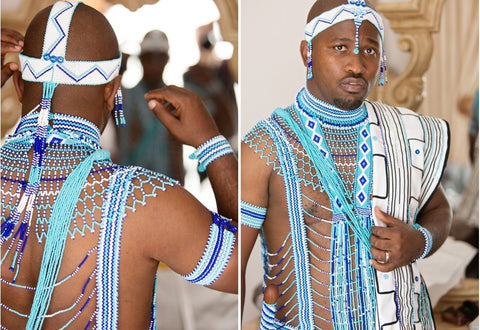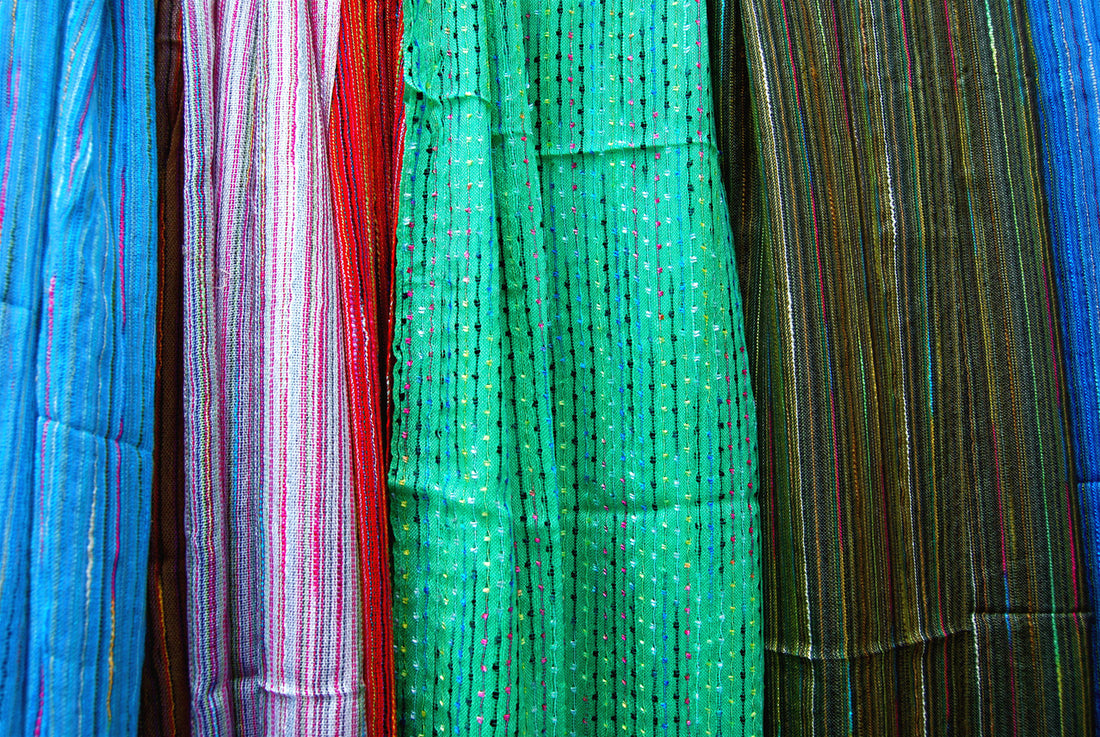South Africa is a hotbed of multiple cultures, ethnicities, cuisines, traditions, and clothing. The country is home to a multitude of people from different parts of the world, and the differences between these cultures can be seen.
The differences can be seen in the food these different cultures take pride in, what their traditions are, and their clothing. The clothing is what we are most interested in, mainly because, in this day and age, western clothing has become common with traditional attire being used during important ceremonies or stages in life.
Xhosa

The Xhosa people have a very complex and diverse clothing culture as what you wear is decided by a person’s social standing. The clothing almost always features beautifully designed beadwork and colourful, printed fabrics. Women’s clothing defines different stages of her life.
For women, their main items of clothing include long skirts and aprons with amazing printed or embroidered fabrics. Elaborate beaded necklaces, called ithumbu, are worn around the neck, as well as beaded anklets and bracelets.
As well as the skirt, aprons and beaded necklaces and bracelets, the women will also wear what is called an iqhiya, or headscarf. This headscarf is traditionally worn by married women. To complete the ensemble, embroidered blankets are worn around the shoulders.
Xhosa men are the hunters, the warriors, and the stockman, therefore animal skins play a huge part in their traditional dress. On special occasions, embroidered skirts are worn, with a rectangular cloth over the left shoulder, or a tunic, with strands of beaded necklaces.
Zulu

In the Zulu culture, the what the women wear is also determined by the stage of life they are in. A young bachelorette will wear her hair short, usually accompanying this look with a grass-reed skirt, embellished with beads. Engaged women will grow their hair and cover their breasts.
A married woman, on the other hand, will cover her body completely to indicate that she is spoken for. She will wear a thick, cowhide skirt which has been softened with animal fat and charcoal. Traditionally, a woman’s breasts would be covered with a cloth, but nowadays a cotton vest or beaded bra is worn with beaded necklaces.
One of the most iconic pieces of Zulu clothing is the circular-shaped hats called izicolo. These are hats made from grass, traditionally worn by married women, and often measure over a metre across to protect the wearer from the harsh sun.
For men, animal skins and feathers are the traditional items of clothing. In Zulu culture, the leopard is seen as the King of the predators, therefore leopard skin is reserved for Zulu royalty alone.
The men will wear a front apron, known as an isinene, and a rear apron, or ibheshu, which are worn to cover the genitals and buttocks. Tufts of cow’s tail are worn on the upper arms and below the knees to give the appearance of more bulk. Headbands are only worn by married men.
Ndebele

The Ndebele people are famous for their incredibly intricate beadwork as well as their very brightly coloured homes designed with geometric patterns. The main element of the women’s attire is her apron.
Younger girls wear a small, beaded apron, while the older girls will wear isiphephetu, a beaded apron given to them by their mothers. They will also wear isigolwani, which are thick, beaded hoops worn around their neck, arms, wrists, and waist.
Married women will wear longer aprons that are made of hardened skin and are very lavishly decorated with their traditional geometric designs. They will also wear isigolwani and copper rings known as idzilla around their necks, ankles, and arms.
Girls and unmarried women will usually not cover their breasts, but married women will cover their upper bodies in blankets, with multi-coloured stripes or beaded designs.
Ndebele men will wear animal skin aprons and beaded breastplates, known as iporiyana, which would hang from their necks. The breastplate is a symbol of manhood and is given to a son by his father after he has been initiated. Men will also wear animal skin headbands and ankle bands, as well as a cape.
Venda

Venda girls traditionally wear a shedo, which is a small apron that covers their pubic area. When the girls mature and develop breasts, they will then wear a nwenda, either at the waist or around one shoulder.
The nwenda is usually made from very brightly coloured strips of fabric. Beaded necklaces, bracelets and headbands are the traditional accessories.
Venda boys and men wear a loincloth known as a tsindi. The tsindi is a triangular piece of animal skin that covers the front, is then passed between the legs, and then tied at the back. In colder weather, a cloak is worn. Nowadays, Venda men usually wear a shirt made of nwenda fabric, and then trousers.
Tsonga

The Tsonga people are an offshoot of the Zulu tribe, and therefore there are similarities in the clothing. The men will wear animal skins, while the women wear a unique skirt called a xibelani. The xibelani is a colourful, gathered skirt that shakes when they dance.
Indian

Indian people in South Africa, even in this day and age, still adhere to much of their culture and traditions. When it comes to clothing, western attire is usually worn on a day to day basis, but more traditional garments are used for formal ceremonies such as a wedding or a funeral.
Cape Malay

The Cape Malay community began with the import of slaves from South-East Asia. Found almost entirely in the Western Cape, the Cape Malays, much like the Indian community, preserve their cultural heritage in all aspects of their lives.
Cape Malays are mostly practicing Muslims, and therefore some will wear traditional Muslim clothing regularly. Others wear western clothing on a day to day basis and then wear traditional outfits when attending mosque, madrassa, or for special occasions.
As you can see, there are numerous traditional clothing styles in South Africa, many you can see every day. These are but a few, and the importance of this clothing is evident, and should definitely be admired and preserved.


